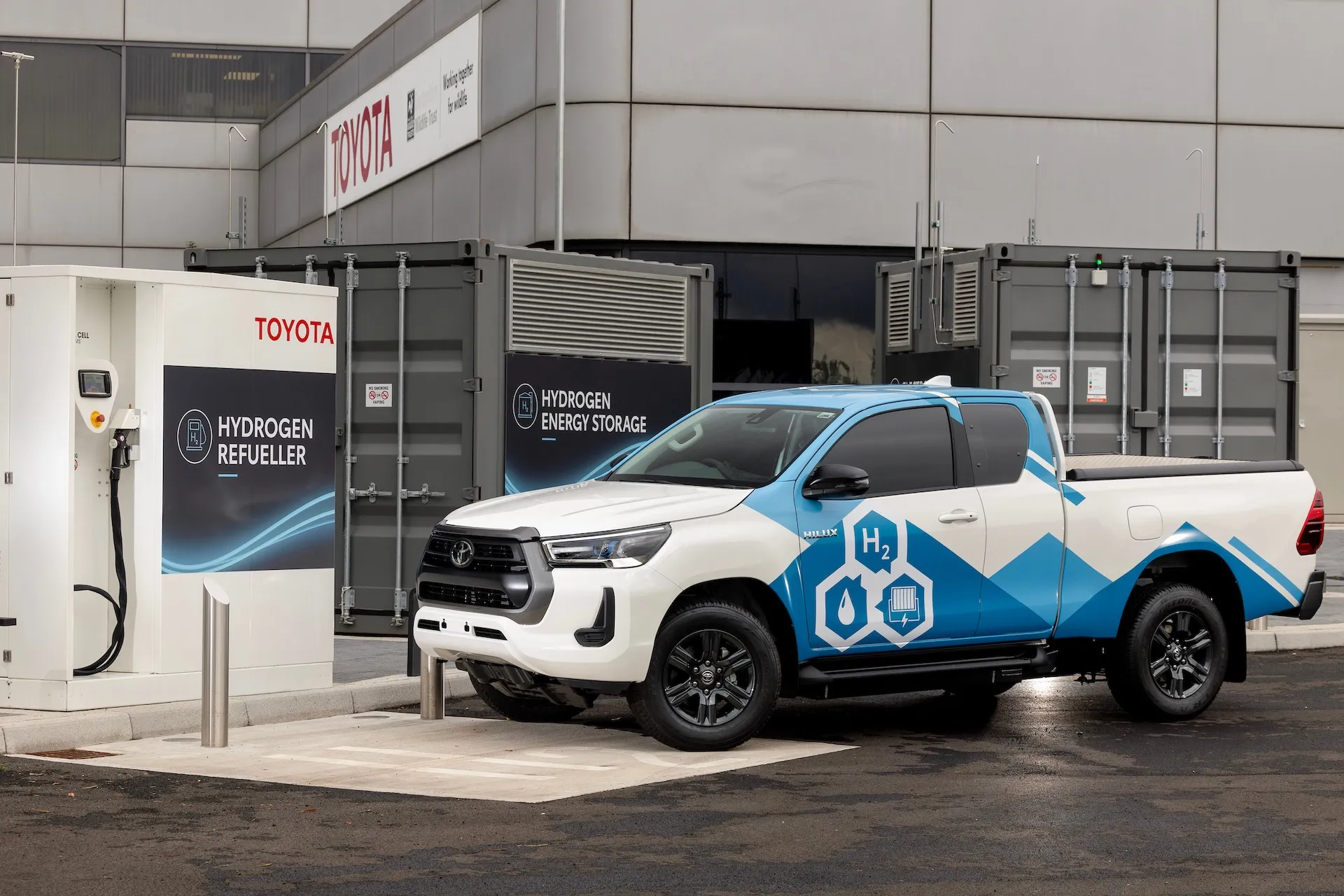Honda maps out its charge-port shift for new EVs. Toyota has revealed a hydrogen fuel-cell pickup project, and it’s ready to take its biggest U.S. port “off the grid.” And will more than four out of five new EVs sold in North Dakota really still fuel up with gasoline? This and more, here at Green Car Reports.
Toyota is producing its own fuel-cell power for its huge Long Beach port with a distributed hydrogen system that’s quite the comprehensive solution for cutting its emissions and energy use. Starting with agricultural methane piped in, the system not only cuts its reliance on grid power but can feed excess power to the grid, generate hydrogen for port semis and new Mirai fuel-cell cars arriving at port, and generate water for washing cars.
Toyota also revealed a hydrogen fuel-cell electric pickup truck—in the U.K., and based on that market’s closest equivalent to the Tacoma, a Hilux. So far it’s just a prototype project, funded partly with government money, but such a truck could be introduced later in the decade, Toyota says.
Honda has set the timeline for adopting Tesla NACS charging. And what that means, it seems, is that dealerships will need to help support the CCS standard in the first EVs arriving next year, while those coming a year later in 2025 will have the different NACS charge port.
And EV adoption is becoming more polarized by state, finds J.D. Power in a study out this week, with EVs becoming far more popular in states that have supported them with policies and incentives. Based on this trend, EVs will still surprisingly be the minority in states like North Dakota by 2035, it anticipates.
_______________________________________










